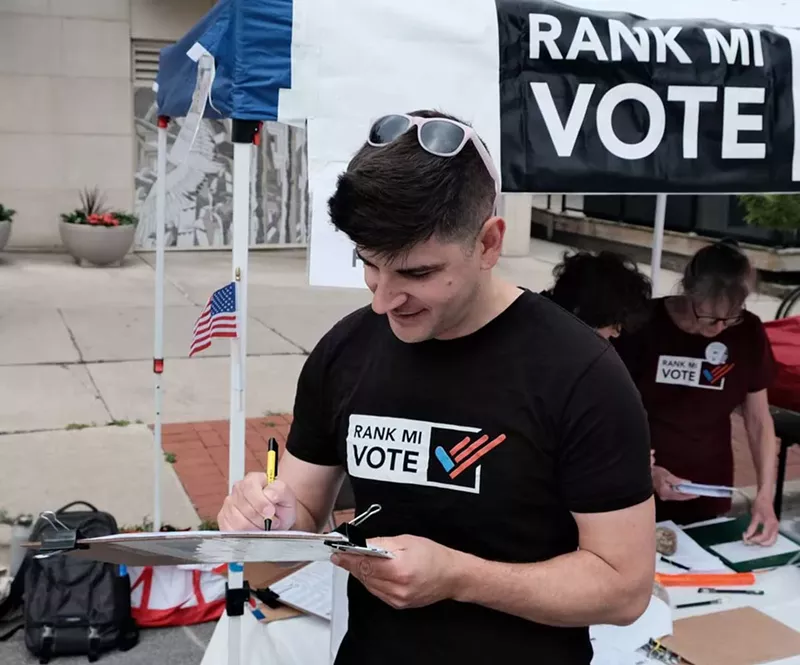
Courtesy photo
Rank MI Vote executive director Pat Zabawa signs the first signature for the petition to bring ranked choice voting to Michigan at the Ann Arbor Art Fair.
Ranked choice voting could come to Michigan — if the campaign to get it on the 2026 general election ballot is successful and voters approve.
The Rank MI Vote campaign said it has started collecting signatures on Thursday.
The petition’s first signature was Rank MI Vote executive director Pat Zabawa’s, who signed it at the Ann Arbor Art Fair, where the campaign will have a booth all weekend.
“One down, 446,197 to go,” Zabawa said in a statement. “Obviously, we have our work cut out for us: when we qualify for the ballot, it will have taken the biggest signature collection campaign in Michigan history. That might intimidate some campaigns, but it’s what this team is built for. We have thousands of volunteers who are very eager to win this with shoe leather and hard work. We’re now in the stage of the campaign where progress is measured in how much ink we put on paper and how many conversations we have with our friends and neighbors.”
In ranked choice voting, voters rank candidates in order of preference, rather than choosing a single candidate. First-choice votes are counted, and if no candidate receives more than 50% of the first-choice vote, the candidate with the fewest first-choice votes is eliminated. Ballots cast for the eliminated candidate are then transferred to the voters’ next highest-ranked choice. The process repeats until one candidate achieves a majority of the votes.
Supporters say ranked choice voting ensures that winners have more than 50% approval from voters. It also removes the pressure for voters to choose one candidate, and allows candidates to campaign without worrying about splitting votes. Supporters say ranked choice also encourages candidates to focus on common ground rather than the bitter politics of division that have become all too commonplace in U.S. politics.
The power of ranked choice voting was on display in New York City’s recent mayoral primary election. While democratic socialist Zohran Mamdani won a plurality of voters himself, ranked choice voting enhanced his victory over disgraced former New York governor (and presumed frontrunner) Andrew Cuomo. It also encouraged cooperation from Mamdani, who is Muslim, and fellow progressive candidate Brad Lander, who is Jewish. Both candidates appeared side by side on the campaign trail and encouraged their supporters to rank both of them. A traditional campaign might have seen the candidates lean into their differences instead.
If the Rank MI Vote petition collects enough signatures, it will appear on the November 2026 general election ballot for a vote. If voters approve, it would apply to state and federal primary and general elections in Michigan starting in 2029, and also allow local adoption.
But first the campaign must collect 446,198 valid signatures in the next six months in order to qualify for the November 2026 ballot.
The campaign says it has already seen enormous support.
“The volunteer energy we’ve seen recently has been beautiful,” Kate Grabowsky, Rank MI Vote’s co-field director, said in a statement. “This is a great ‘problem’ to have, but it’s been a full-time job keeping up with all the new volunteers signing up. The new folks can’t wait to take their clipboards to concerts, festivals, and street corners to start having these important conversations with Michigan voters about how Ranked Choice Voting benefits all of us.”
More information, including the full ballot language and where to sign the petition, can be found at rankmivote.org.
(Except for the headline, this story has not been edited by PostX News and is published from a syndicated feed.)


